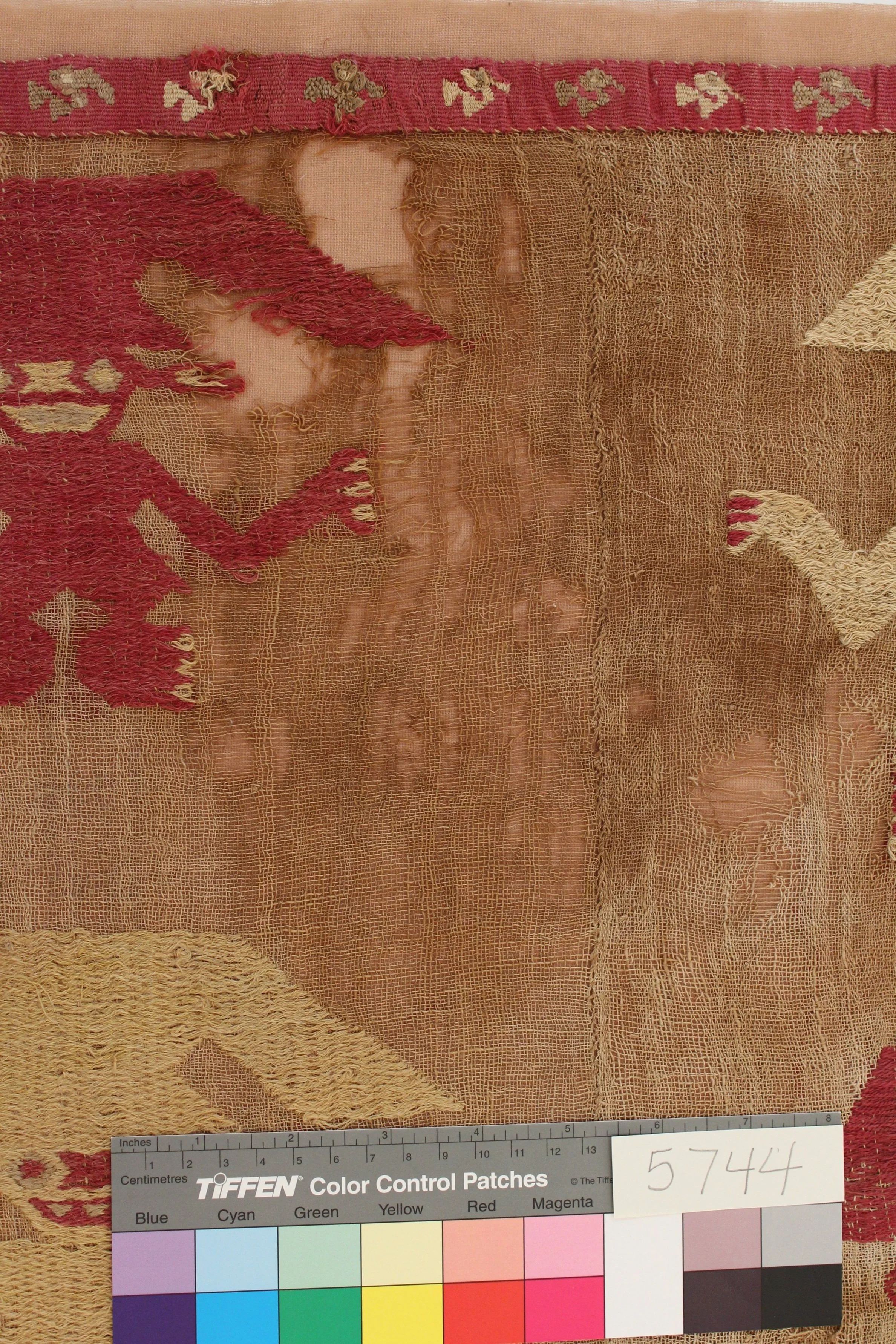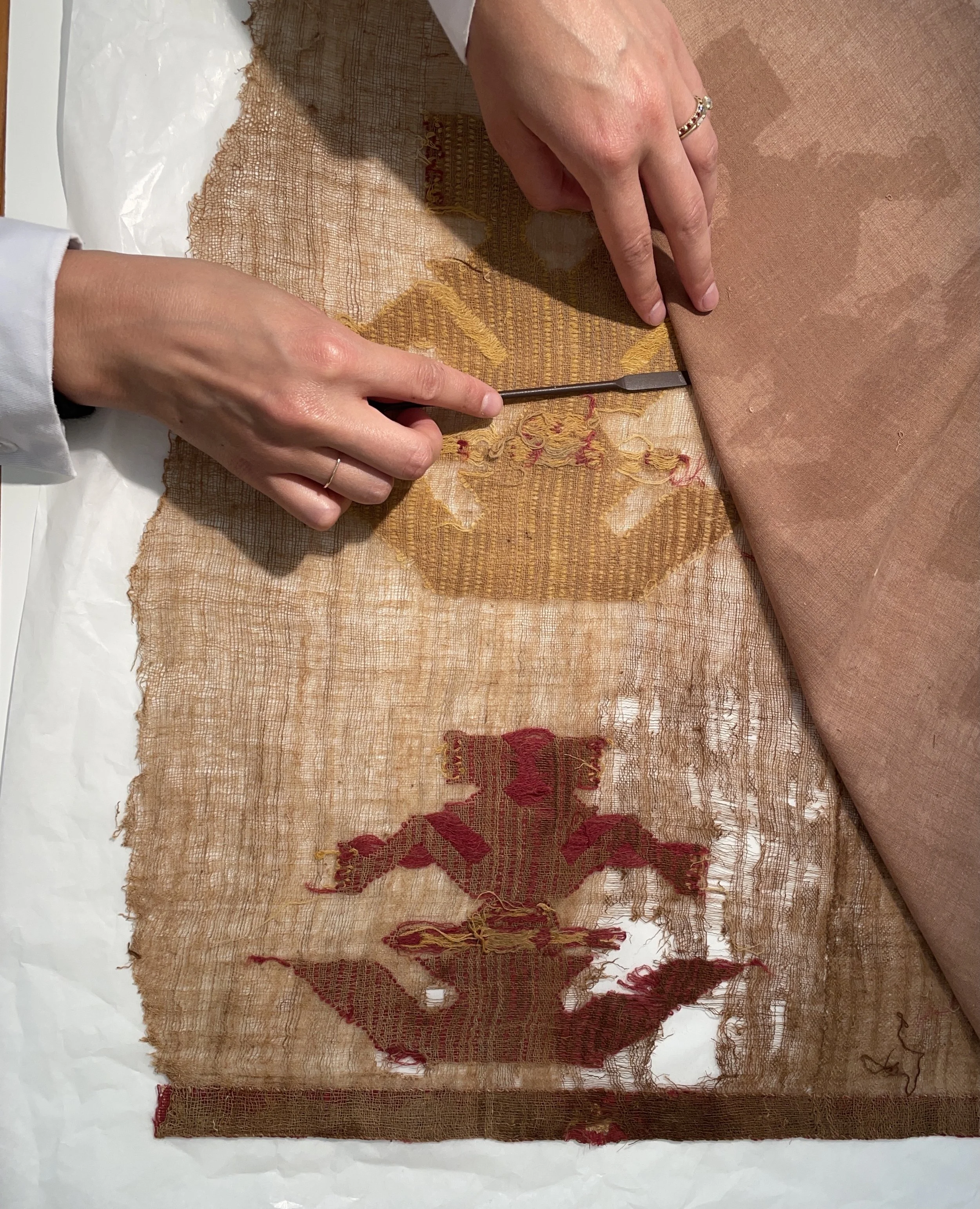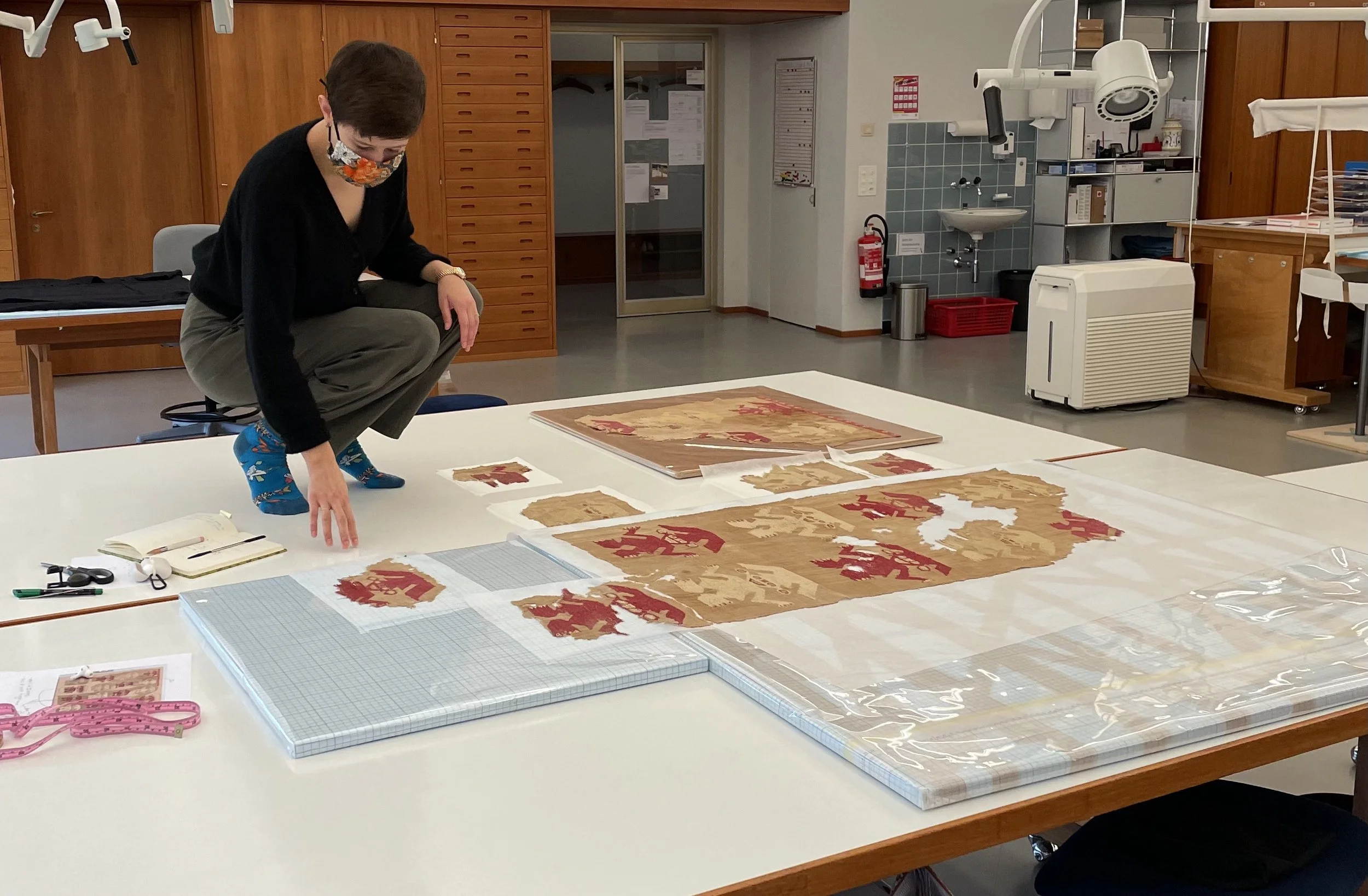
Before treatment
Textile with Figures
Peru, Chimú or Inca culture
13-15th century
Abegg-Stiftung
Cotton and camelid (llama or alpaca)
This is a plain weave cotton textile consisting of eight individual fragments of varied size . It is decorated with 16 crescent headdress figures woven using a supplementary camelid weft. One fragment has an intact slit tapestry woven border.
Four of the fragments have abutted seams and partially intact selvages. They are stitch-mounted on a fabric covered board, with some fragments overlapping.
Condition Before Treatment
The textile was stable with minimal surface grime on the front. It is unevenly stained from burial and faded from prolonged display.
In addition to the overall fragmentary state, there are numerous losses throughout the textile. Damages to the plain weave cotton have resulted in areas of unsupported supplementary weft in 13 of the 16 figures. There are also three areas of damaged or lost warp in the tapestry band.
The mounting and the overlap of different fragments had resulted in minor distortions of the textile. This was most significant in the figure in the upper right.
Revealing Light Damage
When the textile was removed from its stitched support, the extent of light damage and fading to both the object and mounting textile were apparent. The mounting textile was significantly faded, and the supplementary weft yarns were much more vibrant on the verso. This was most apparent in the yellow yarns, which appear closer to white on the front of the piece. The cotton ground also appeared bleached where it had been exposed to light. This was most apparent in areas of overlap between fragments.
Microfade testing was conducted to conclude that the color changes were the result of light damage instead of reactions with the wood support.
The bright yellow of the supplementary weft and the extreme fading of the support were revealed as the textile was removed from its support.
Diagram of all fragments, location of Z spun yarns (Fragments 1 and 2) marked with Z
Unexpected Twist
During reconfiguration of the fragments, it was discovered that two fragments contained Z spun warps in the ground. All other fragments had S spun cotton warps. This clue helped to align the two fragments in a new configuration.
The Z spun yarns do appear darker than the S spun yarns. However, the other fragments also have natural color variation in the cotton, which has resulted in similar stripe patterning without the presence of Z spun yarns. These natural color variations were also useful when rearranging the fragments.
Puzzling Pieces
In addition to the Z spun yarns, the presence of seams, selvages, tear edges, and natural color variation in the cotton were all clues for rearranging the fragments.
Three fragments were actually found to align horizontally along tears, completing altering the configuration of the textile. This configuration has resulted in 18 different figures or partial figures, as opposed to the previous configuration which suggested 16. The new reconfiguration also demonstrates that the supplementary weft figures are meant to be arranged in a checkerboard pattern (alternating between yellow and red). Previously they were arranged with the colors mirrored across the central axis.
Each fragment was placed on a moveable support so different configurations could be tested safely.
After treatment
Condition after treatment
The textile is now pressure mounted on a custom made padded board. No interventive conservation treatment was conducted due to the fragility of the textile. However, in the new configuration, no fragments are overlapping, preventing distortions and allowing for a more accurate portrayal and understanding of the textile’s original size, layout, and structure.
Images courtesy and copyright of the Abegg-Stiftung





